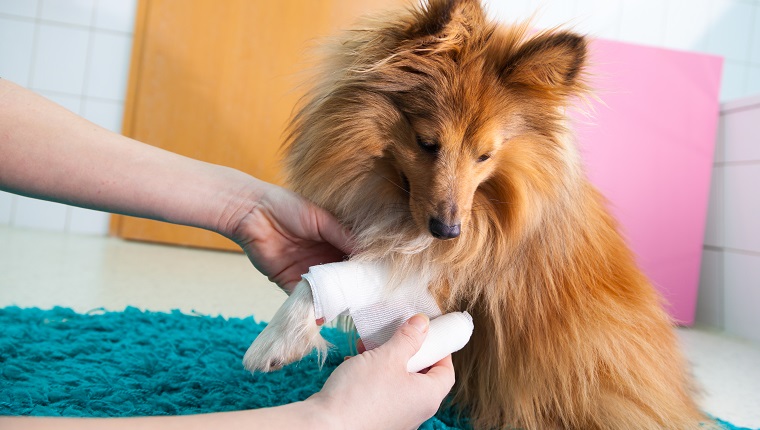Anaerobic bacterial infections in dogs occur when the animal becomes infected by bacteria that are able to grow without any oxygen. These types of infections often occur in the mouth or involve a deep cut, bite, or wound.
An anaerobic bacterial infection should be treated as quickly as possible. If the severity of the infection increases, then a dog could suffer from shock. In some cases, the condition can also prove fatal.
If you see signs that your dog might be suffering from an infection, then you must consult your veterinarian for a proper diagnosis and course of treatment. Here’s what you should know about the symptoms, causes, and treatments of anaerobic bacterial infections in dogs.
Symptoms Of Anaerobic Bacterial Infections In Dogs
Anaerobic bacterial infections in dogs can lead to a range of symptoms depending on the seriousness of the initial wound. In most cases, an infection of this type will result in the wound filling with pus.
Some of the other common symptoms include:
- Fever
- Problems eating food
- Loss of appetite
- Rash around the wound
Causes Of Anaerobic Bacterial Infections In Dogs

The cause of anaerobic bacterial infections in dogs is an imbalance of the normal bacteria that is present in a dog’s body. Usually, this happens when the dog suffers an injury, like a bite or a puncture, or even during a surgical procedure.
There are a number of different types of bacteria that can lead to anaerobic bacterial infections in dogs. Some of the most likely bacteria include:
- Actinomyces
- Peptostreptococcus
- Bacteroides
- Fusobacterium
Treatments For Anaerobic Bacterial Infections In Dogs
If you suspect that your dog might be suffering from an anaerobic bacterial infection, make an appointment to see your veterinarian as soon as possible.
Your vet will ask about your dog’s medical history, as well as any recent incidents that might have caused an injury that could lead to an infection. Vets usually order blood and urine tests too, along with taking samples of any pus from a wound.
After confirming their diagnosis, your vet will most likely prescribe a course of antibiotics to fight off the infection. If your vet prescribes antibiotics for your dog, it is vital that you stick to the recommended dosage and frequency instructions along with completing the full course of medication.
In most cases, vets will deep clean the wound. If the source of the infection is located inside the dog’s body, then the vet may need to use anesthetics to complete treatment.
Has your dog ever developed an anaerobic bacterial infection? Did your vet prescribe medication to fight it off? Tell us all about it in the comments below.









